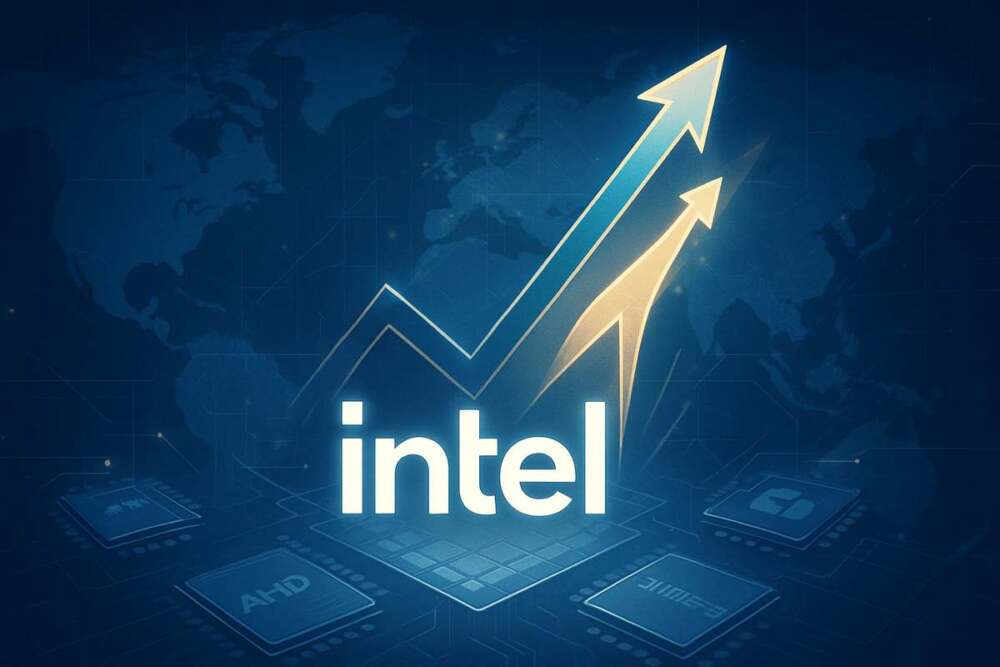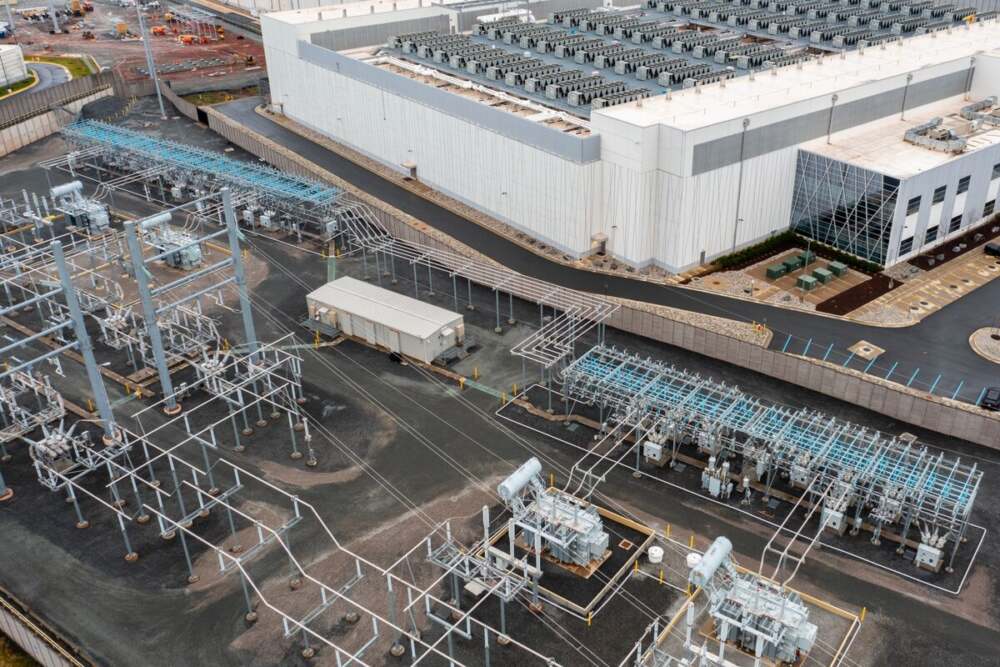Intel Corporation has surprised Wall Street once again with a stronger-than-expected third-quarter earnings report, fueling optimism that the iconic chipmaker may finally be regaining its footing after several turbulent years. The company’s stock surged following the announcement, reflecting a shift in investor sentiment and a broader belief that Intel’s ambitious turnaround strategy under CEO Pat Gelsinger is starting to deliver real results.
A Quarter That Beat Expectations
Intel reported third-quarter revenue of approximately $13.7 billion, marking a healthy year-over-year increase and surpassing market forecasts. The company’s adjusted earnings per share reached $0.23, a notable improvement from last year’s comparable quarter, which had seen profits nearly wiped out by inflationary pressures and supply-chain disruptions.
The results were driven primarily by stronger performance in Intel’s Client Computing Group and its Data Center and AI segment, both of which benefited from a combination of cost discipline and early wins in artificial-intelligence-focused hardware.
Intel’s CEO highlighted in his post-earnings remarks that the company’s transformation plan—centered on “rebuilding Intel’s engineering culture” and “reestablishing leadership in semiconductor manufacturing”—is starting to yield visible benefits.
Turning the Corner: Cost Cuts, Capital Shifts, and AI Investment
Over the past 18 months, Intel has undergone a comprehensive restructuring. The company implemented large-scale cost-cutting initiatives, reducing operational expenses by billions while streamlining its workforce and divesting non-core assets. These measures allowed Intel to free up cash and reallocate resources toward its foundry business and AI chip development, areas viewed as critical for future growth.
One of Intel’s most ambitious projects is its IDM 2.0 strategy, which aims to transform Intel from a purely in-house chipmaker into a global foundry competitor capable of manufacturing chips for other technology firms. This approach directly challenges dominant players like TSMC and Samsung, and though Intel trails in advanced manufacturing nodes, it has begun to close the gap through strategic partnerships and technology advances.
On the AI front, Intel has introduced its Gaudi line of AI accelerators, designed to compete with Nvidia’s widely used GPUs. Early adoption from enterprise customers has been encouraging, especially as companies look for alternatives to the expensive and often supply-constrained Nvidia chips.
Options Market Signals Confidence
Beyond equity markets, the options market has shown a noticeable shift in sentiment toward Intel. Analysts tracking derivatives activity noted a surge in bullish call-option volume, with investors positioning for further upside in the coming months.
Options expiring in early 2026 are now implying that traders expect the stock to remain on a steady upward trajectory, with strike targets suggesting potential gains of another 10 % to 15 % if Intel continues to execute effectively.
Such activity typically reflects institutional confidence, as hedge funds and large investment firms tend to use long-dated call options to express faith in a company’s recovery story.
The AI Revolution and Intel’s Role
Intel’s resurgence coincides with an industry-wide race for dominance in artificial intelligence infrastructure. As demand for high-performance computing power accelerates, chipmakers have become the backbone of the global AI revolution.
While Nvidia and AMD currently lead the pack, Intel’s decades of design experience and manufacturing capacity offer it unique advantages. The company has been working aggressively to produce chips optimized for AI workloads, including data-center inference and training applications. Its Gaudi 3 processors, scheduled for mass production next year, are being closely watched by analysts and cloud-service providers alike.
If Intel can successfully capture even a small share of the rapidly growing AI-chip market, it could represent billions in new annual revenue and a significant catalyst for its long-term valuation.
Challenges Still Loom
Despite the encouraging results, Intel’s turnaround remains a work in progress. The company continues to face:
- Intense competition from Nvidia, AMD, and ARM-based chip designers, all of whom are moving aggressively into new market segments.
- High capital expenditure as Intel invests heavily in new fabrication plants in the United States and Europe—part of its push to localize semiconductor production.
- Execution risk related to its manufacturing roadmap; delays or technical setbacks could quickly erode investor confidence.
- Macroeconomic headwinds, including fluctuating demand for personal computers and enterprise servers.
Moreover, some analysts remain skeptical that Intel can regain its technological leadership within the next two years, given how far ahead rivals have advanced in sub-3 nanometer chip manufacturing.
The Broader Market Context
Intel’s rebound has arrived during a crucial period for the global semiconductor sector. After two years of volatility marked by supply shortages and shifting consumer demand, the market is stabilizing—and even rebounding—on the back of AI-related investment.
Chipmakers worldwide are benefiting from a wave of reindustrialization policies, particularly in the United States and Europe, which aim to reduce dependence on Asian supply chains. Intel’s domestic manufacturing plans align perfectly with these policies, positioning the company to receive billions in government subsidies and tax incentives through the CHIPS and Science Act.
This geopolitical shift in semiconductor strategy adds a layer of resilience to Intel’s business model, while also giving it a competitive edge in securing high-value government and defense contracts.
Investor Sentiment and the Road Ahead
The market reaction to Intel’s Q3 results was swift and positive. Shares jumped sharply following the announcement, bringing year-to-date gains above 30 %. Analysts see this as validation that Intel’s multiyear transformation plan—long viewed with skepticism—is beginning to take shape.
However, sustaining that momentum will depend on consistent delivery in the coming quarters. Investors will be watching closely for:
- Continued margin expansion,
- Progress in AI product rollout, and
- Evidence that Intel’s foundry services can attract large external customers.
Should those milestones be achieved, Intel could not only reclaim its standing as a dominant semiconductor player but also emerge as a credible rival to today’s AI-era leaders.
Conclusion: A Reawakening Legacy
For decades, Intel defined the semiconductor industry—its processors powered everything from the first personal computers to global data centers. Yet in recent years, it became the cautionary tale of what happens when innovation lags and competition catches up.
Now, with a revitalized leadership team, strategic investment in AI and manufacturing, and a strong balance-sheet recovery, Intel appears ready to reclaim a portion of its lost prestige.
The latest quarter is more than just a financial win; it’s a symbolic moment that suggests Intel’s comeback is no longer hypothetical. The next phase will determine whether the company can transform this momentum into lasting dominance.
















Leave a Reply